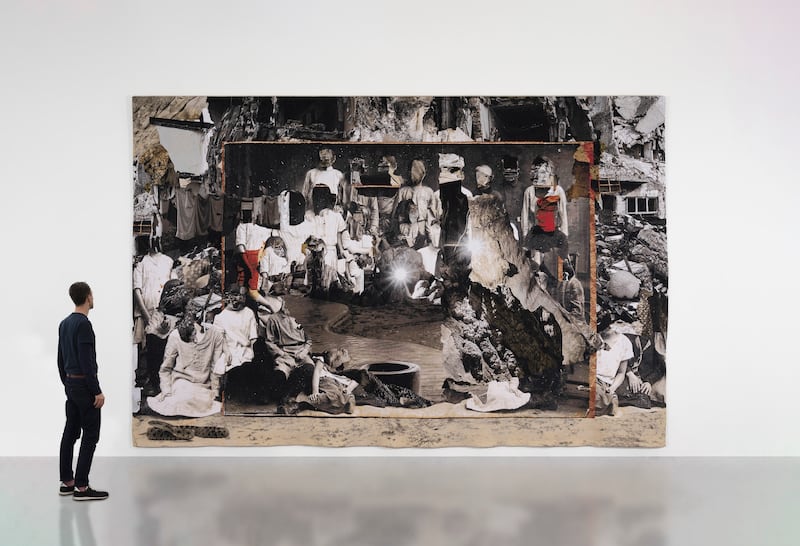Ailbhe Ní Bhriain: Interval Two (Dream Pool)
Kerlin Gallery, Dublin
★★★★☆
The Co Clare artist Ailbhe Ní Bhriain has a long-standing preoccupation with hybrid image-making processes, and over the past 20 years she has produced an arresting body of work that moves seamlessly between sculpture, installation, film, print and photography. This latest show at the Kerlin, her first solo exhibition for the Dublin gallery, augurs an exciting new stage in her evolving visual practice.
It features three room-dominating tapestries. Each is rendered with a Jacquard loom, which allows for the weaving of highly complex designs composed of several materials, including cotton, wool, silk and Lurex. In addition to the tapestries (all part of the Interval series), the exhibit includes several pigment prints and two resin-and-polyurethane sculptures of large, hairless cats, curled up in sleep, which are reminiscent of ancient Egyptian sarcophagi.
Patented by the French polymath Joseph Marie Jacquard in 1804, the Jacquard loom is able to process intricate designs by using a system of punched cards that determine where the threads are woven. Jacquard’s method of transmitting information, of course, is a precursor to the computer. Charles Babbage, the English scientist often credited as the father of digital computing, famously repurposed this method to draw up designs for his “difference engine” and “analytical engine” inventions, which were some of the very earliest designs for calculating machines or “general purpose” computers. By incorporating the Jacquard loom into her practice, Ní Bhriain deliberately references the prehistory of computing.


As for the objects themselves, the tapestries are collages. Each combines and solicits from three traditional genres of image production: the family portrait, natural landscapes and something akin to war photography. At the centre of each study is a group photograph with several figures either standing or sitting in formal postures. Going by the clothes and texture of the portrait image, they look as though they are reproductions of archival photographs from the late 19th or early 20th century.
RM Block
That said, the very notion of a centrepiece or central focus is studiously undermined by Ní Bhriain’s collage technique. Intervening across the portraits are impressive rock formations, some of which bear the graceful, fluid aesthetic of mineral deposits in underground caves, while others are like distant visions of Alpine mountains. Adjoining these are images of bombed-out cityscapes, featuring strewn rubble and buildings in states of collapse. Each terrain of imagery invades the others equally, contributing to a sense of flatness in the composition. There are no layers, only distinct planes: the tapestries promote their surface and diminish any suggestion of depth or ground.
This flatness at the level of form is intriguingly amplified at the level of content. None of the human figures has a face – each physiognomy is replaced by scree, rock and detritus. Ní Bhriain’s decision to eliminate her subjects’ faces deprives the audience of a psychological foothold into the tapestries: depersonalisation is another tool the artist uses to achieve a sense of groundlessness.
Highly recommended.
Interval Two (Dream Pool), by Ailbhe Ní Bhriain, is at the Kerlin Gallery, Dublin, until Saturday, January 6th


















